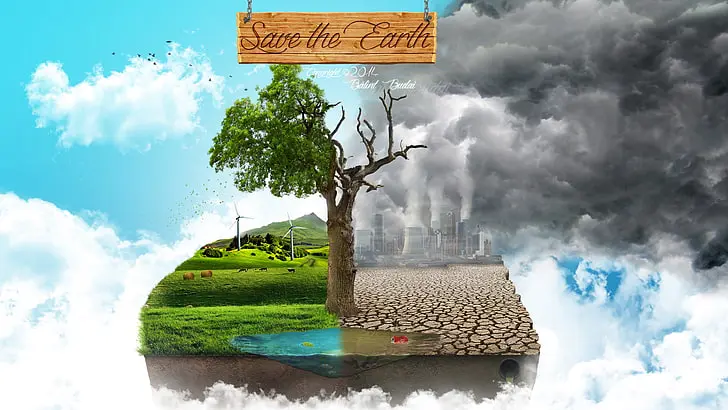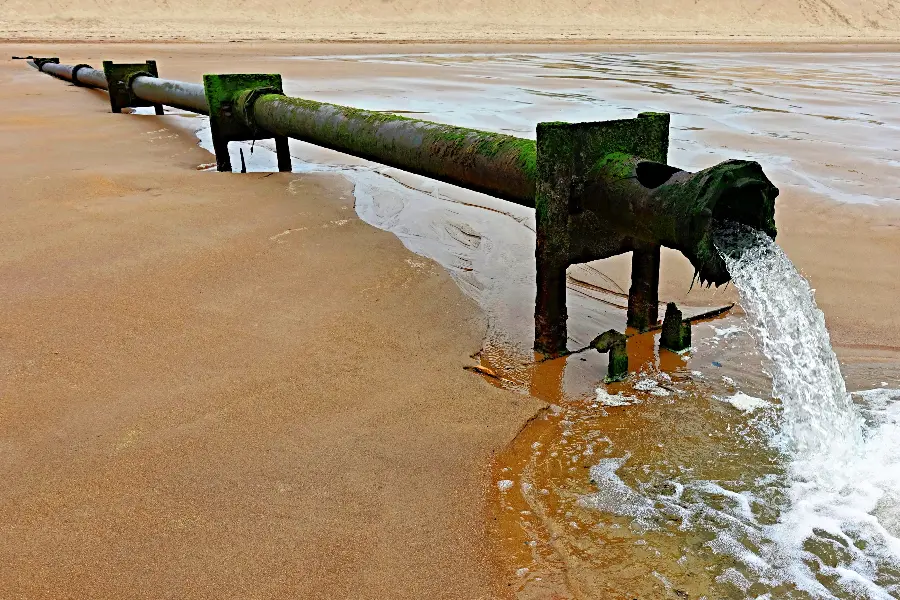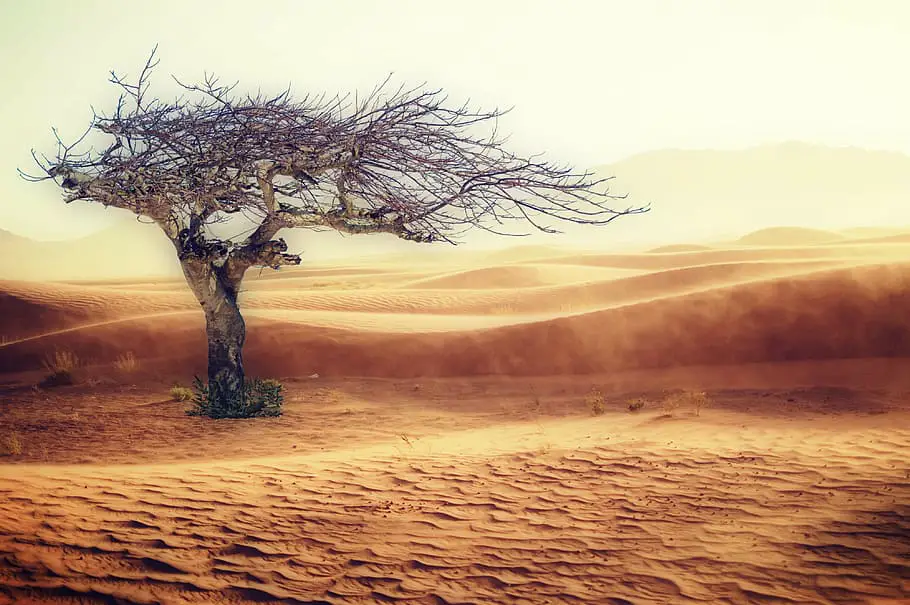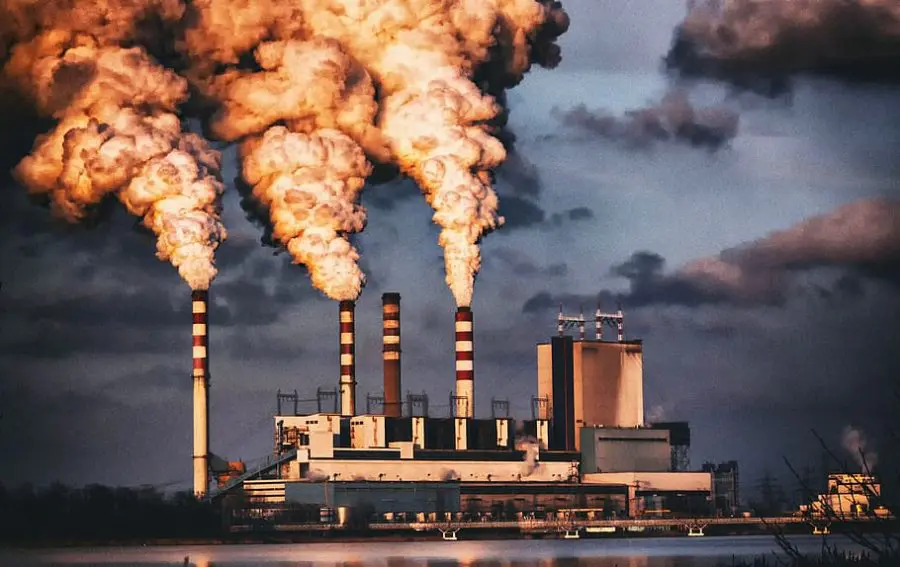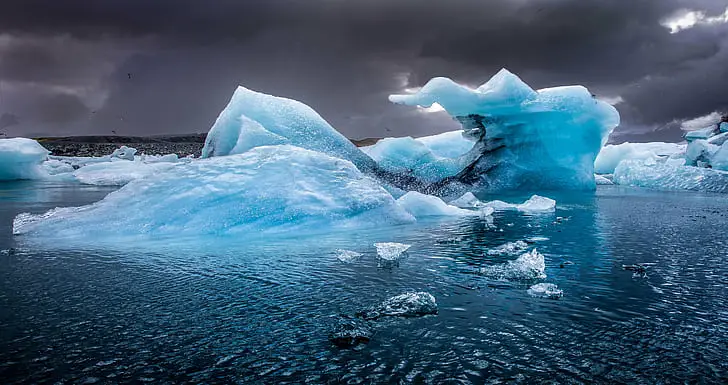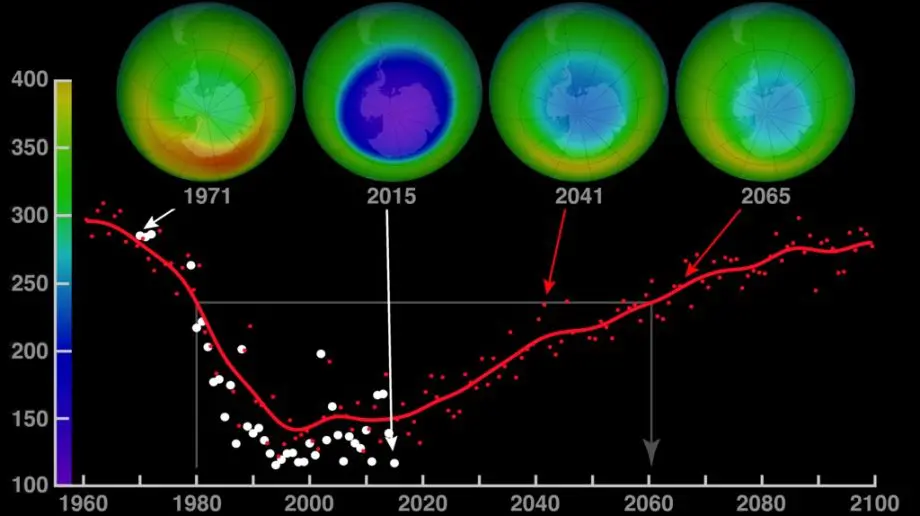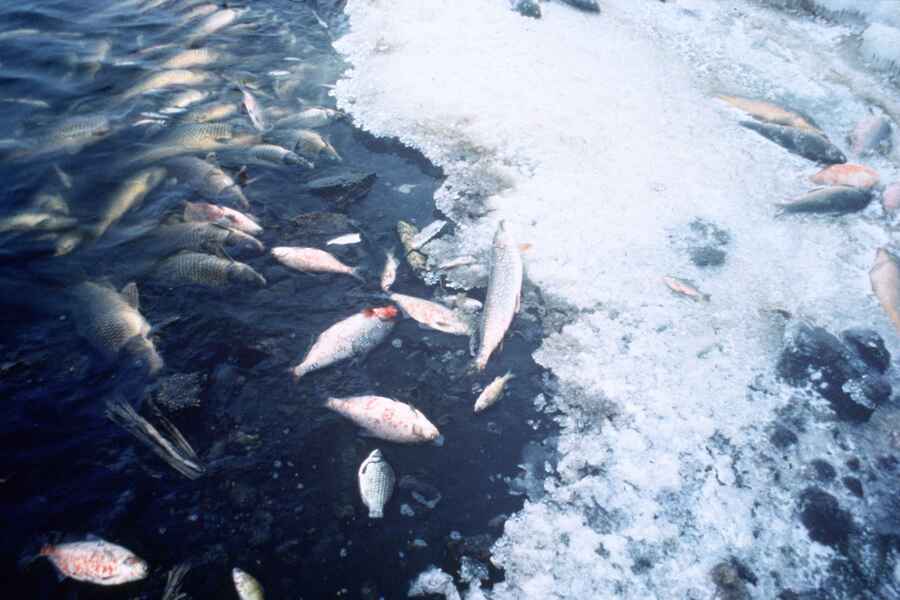
Let’s find out how can water pollution be reduced. Join us as we explore causes, effects, and solutions for a cleaner future with less water pollution!
If you ever wondered about how can water pollution be reduced you’re not alone.
As we navigate through our daily lives, the health of our planet is becoming a concern for many of us.
Water, the lifeblood of our Earth, is under threat from pollution. But don’t worry, it’s not all doom and gloom.
There are practical steps we can all take to turn the tide. In this blog post, we’ll dive into the causes of water pollution, its effects, and most importantly, the ways we can all contribute to its reduction.
So, let’s embark on this journey together towards a cleaner and healthier world!
How Can Water Pollution Be Reduced?
How can water pollution be reduced?’ It’s a question that’s becoming increasingly important in our world today.
In this blog post, we’re going to tackle this issue head-on. We’ll start by understanding the root causes of water pollution, from industrial waste, solid waste to oil spills.
Then, we’ll delve into the impacts it has on our health, wildlife, and the environment.
But it’s not all about the problems. We’ll also explore a variety of solutions for water conservation that each one of us can implement in our daily lives.
Plus, we’ll share some inspiring case studies of successful water pollution reduction.
So, let’s dive in and explore how we can make a difference!
Definition of Water Pollution
Let’s start at the beginning. What exactly is water pollution?
Well, in simple terms, water pollution occurs when harmful substances, often harmful chemicals or microorganisms, contaminate any stream, river, lake, ocean, aquifer, coastal waters, or other body of water, degrading water quality and rendering it toxic to humans or the environment.
According to the U.S. Environmental Protection Agency: When the water in our rivers, lakes, and oceans becomes polluted; it can endanger wildlife, make our drinking water unsafe, and threaten the waters where we swim and fish. EPA research supports efforts under the Clean Water Act and Safe Drinking Water Act.
Importance of Water Pollution Reduction
Now, you might be wondering, why is reducing water pollution so important.
Imagine trying to clean a wine-stained carpet, only to find that people keep spilling more wine on it.
It’s the same with our water bodies. The more pollutants we add, the harder it becomes to clean up.
And the consequences? They’re far-reaching, affecting everything from our health and wildlife to the climate.
By reducing water pollution, we’re not just saving the environment, but we’re also protecting ourselves and future generations.
Brief Overview of the Article
In this article, we’re going to take a deep dive into the world of water pollution.
We’ll explore its causes, from industrial waste to household waste, and discuss its effects on human health, wildlife, and the environment.
But we won’t stop at just identifying the problem. We’ll also look at various ways to reduce water pollution, from personal efforts to technological solutions.
Plus, we’ll share some inspiring case studies of successful water pollution reduction.
And of course, we’ll answer some frequently asked questions on the topic. So, buckle up and get ready for an enlightening journey!
Causes of Water Pollution
Now that we’ve set the stage, let’s delve into the heart of the matter – the causes of water pollution.
It’s a bit like playing detective, tracing back the clues to find the culprits.
And in this case, the ‘culprits’ are numerous.
From industrial waste to agricultural runoff, household waste, septic systems, stormwater runoff, and oil spills, each plays a part in contaminating our precious water bodies.
Understanding these causes is the first step toward finding effective solutions.
So, let’s roll up our sleeves and get to the bottom of what’s causing our water pollution problem.
Industrial Waste
First on our list is industrial waste. Picture factories with their smokestacks billowing out fumes.
But it’s not just the air that’s affected. Many industries produce liquid waste as well, often loaded with heavy metals, toxic chemicals, and other pollutants.
When improperly handled, this waste can end up in our rivers, lakes, and oceans, causing significant harm to aquatic life and contaminating our water supplies.
It’s a bit like someone pouring a bucket of paint into your fish tank. It’s not a pretty sight for the fish, right?
Agricultural Runoff
Next up, we have agricultural runoff. Imagine a field after a heavy rain. The water doesn’t just stay on the field.
This surface water runs off, carrying with it anything in its path. This often includes fertilizers and pesticides used in farming.
These substances can end up in nearby water bodies, leading to problems like algae blooms that suck the oxygen out of the water and make it uninhabitable for other forms of life.
It’s like adding too much food to your fish tank, it might seem like a good idea, but it can quickly turn the water toxic.
Household Waste
Now, let’s talk about household waste. This includes everything from the cleaning products we use to the medicines we dispose of improperly to our septic tanks and pet waste.
Even the soap we use to wash our dishes or in our washing machine can contribute to water pollution when it goes down the drain.
Finally, the plastic bags and plastic bottles we use end up in our water if not properly disposed of.
It’s a reminder that our everyday actions at home can have a broader impact on the environment.
It’s like leaving the tap running while you brush your teeth. It might not seem like a big deal, but over time, it all adds up.
Oil Spills
Lastly, we have oil spills. These are often the result of accidents involving tankers, pipelines, or drilling rigs.
However even on a smaller scale when a homeowner pours motor oil down a storm drain it can affect local streams or other water bodies.
When oil spills into a body of water, it forms a thick layer on the surface that can harm birds, fish, and other wildlife.
The oil doesn’t mix with the water, and it can cause serious problems for any creatures living in it.
Effects of Water Pollution
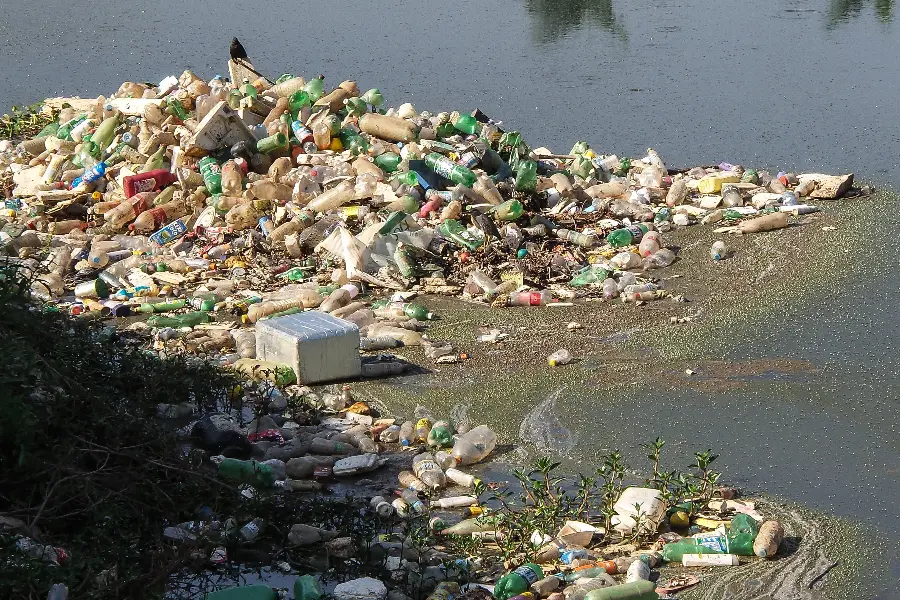
Having explored the causes of water pollution, it’s time to look at its effects.
It’s a bit like a domino effect. One thing leads to another, and before you know it, the consequences to the earth’s surface are far-reaching.
From our health to the wildlife we cherish, and the environment we depend on, water pollution leaves no stone unturned.
But don’t worry, it’s not all doom and gloom. By understanding these effects, we can better appreciate the importance of reducing water pollution and be more motivated to take action.
So, let’s take a closer look at how water pollution affects us and the world around us.
Impact on Human Health
Let’s start with something close to home, our health. Just as we need clean air to breathe, we need clean water to drink.
When our water sources are polluted, it can lead to a host of health issues. Think about it like drinking from a dirty glass it’s not very appealing, right?
Contaminated water can carry diseases like cholera, dysentery, and typhoid.
Plus, long-term exposure to polluted water can lead to more serious conditions like cancer and neurological disorders.
It’s a stark reminder of why clean water is so essential for our well-being.
Impact on Wildlife
Next, let’s consider our fellow inhabitants of this planet, the wildlife. Water pollution can be devastating for aquatic life.
It’s like if someone dumped a bunch of trash into your home, not very pleasant, is it?
Many pollutants are toxic to marine creatures, leading to mass die-offs and disruptions to the food chain.
Birds and land animals that depend on these water bodies for drinking and bathing are also affected.
It’s a ripple effect that touches every corner of the ecosystem.
Impact on the Environment
Finally, we come to the broader environmental impact. Water pollution doesn’t just affect us and wildlife.
It also has significant implications for the environment as a whole.
Think of it like a garden if you water the plants with contaminated water, it won’t be long before the whole garden suffers.
Polluted water can lead to the degradation of natural habitats, contributing to the loss of biodiversity.
It can also exacerbate the effects of climate change by contributing to phenomena like ocean acidification.
It’s a stark reminder of how everything in nature is interconnected.
Ways to Reduce Water Pollution
Now that we’ve explored the causes and effects of water pollution, let’s shift gears and focus on solutions.
After all, understanding a problem is only half the battle. The other half is figuring out how can water pollution be reduced.
The good news is, there are plenty of ways to tackle this issue, from changes we can make in our daily lives to larger-scale efforts.
It’s a bit like cleaning up after a big party. It might seem overwhelming at first, but with everyone pitching in, it becomes a lot more manageable.
So, let’s explore some of the ways we can all contribute to reducing water pollution.
Personal Efforts
Reducing, Reusing, and Recycling
First up, let’s talk about the three R’s: reducing, reusing, and recycling. These are actions we can all take in our daily lives to help reduce water pollution.
It’s like tidying up your room, every little bit helps. By reducing our consumption, reusing items where possible, and recycling what we can’t reuse, we can help decrease the amount of waste that ends up in our water bodies.
Proper Disposal of Chemicals and Medicines
Next, let’s consider how we dispose of chemicals and medicines.
Flushing them down the toilet or sink might seem like the easy option, but it can lead to water pollution.
Likewise, some people use storm drains to dispose of motor oil or other chemicals.
Hosing down sidewalks can often wash lawn fertilizers or other debris into our storm drains. Try sweeping with a broom instead.
We should aim to dispose of these items at designated collection points or recycling centers.
Using Water-Efficient Products
Lastly, on a personal level, we can choose to use water-efficient products.
This includes everything from low-flow showerheads to water-efficient washing machines.
It’s a bit like choosing to walk or cycle instead of driving. It’s a small change that can make a big difference.
Community Efforts
Community Clean-Up Events
On a community level, we can participate in or organize clean-up events.
This could involve picking up litter in a local park or participating in a larger river or beach clean-up.
It’s a bit like a neighborhood clean-up day and it’s a great way to make a difference and build community spirit.
Stormwater Management
Another community effort involves stormwater management.
This can include actions like planting a rain garden or installing rain barrels to capture and use rainwater.
It’s a practical solution that can help reduce water pollution.
Governmental Efforts
Enforcement of Water Pollution Laws
On a larger scale, governments play a crucial role in reducing water pollution through the enforcement of laws and regulations.
This can involve everything from regulating industrial waste to setting standards for water quality.
It’s a bit like having a referee in a football game and it helps ensure everyone plays by the rules.
Infrastructure for Clean Water
Governments can also invest in infrastructure for clean water. This can include everything from wastewater treatment plants to safe drinking water facilities.
It’s like building a new road that requires planning and investment, but it’s essential for the well-being of the community.
Technological Solutions
Wastewater Treatment
Finally, let’s talk about technological solutions. One key area is wastewater treatment.
This involves using technology to remove pollutants from water before it’s released back into the environment.
It’s a bit like having a filter in your fish tank that helps keep the water clean.
Green Agriculture
Another technological solution is green agriculture. This involves using sustainable farming practices to reduce agricultural runoff.
It can include everything from precision farming to organic agriculture. It’s like choosing to garden without pesticides and it’s better for the soil and the water.
Case Studies of Successful Water Pollution Reduction
Having explored the various ways to reduce water pollution, let’s now turn our attention to some real-life examples.
After all, there’s nothing like a good success story to inspire action, right?
In this section, we’ll look at a couple of case studies where concerted efforts have led to significant reductions in water pollution.
It’s a bit like reading about someone who managed to clean up their cluttered house and it shows us that change is possible and gives us ideas for how we can achieve it.
So, let’s dive into these inspiring stories of successful water pollution reduction.
Case Study 1 – Boston Harbor
Let’s start with a success story from right here in the United States. The city of Boston, Massachusetts, faced a major water pollution problem in the 1980s.
The Boston Harbor was considered one of the dirtiest in the country due to untreated sewage and industrial waste. But the city didn’t stand by idly.
They launched the Boston Harbor Project, a massive cleanup effort that involved upgrading sewage treatment facilities and implementing strict regulations for industrial waste disposal.
Fast forward to today, and the harbor is a shining example of successful water pollution reduction.
It’s now home to a variety of marine life and is a popular spot for recreation.
It’s like seeing a neglected garden transform into a vibrant, blooming space, truly inspiring!
B. Case Study 2 – Osaka’s Waterways
Our second case study takes us to the other side of the world, to the city of Osaka in Japan.
In the mid-20th century, Osaka’s waterways were heavily polluted due to rapid industrialization. But the city took action.
They implemented strict regulations on industrial waste disposal and invested heavily in wastewater treatment technology.
They also launched public awareness campaigns to encourage residents to play their part in reducing water pollution.
Today, Osaka’s waterways are much cleaner, and the city is known for its successful water management strategies.
It’s a testament to what can be achieved with concerted effort and determination.
FAQs
As we near the end of our deep dive into water pollution, let’s take a moment to address some frequently asked questions.
After all, we’ve covered a lot of ground, and you might still have some queries buzzing around in your head.
From ‘How can water pollution be reduced?’ to the causes and effects of water pollution, we’ve got you covered.
So, let’s dive into these FAQs and clear up any lingering questions you might have.
Q. What is water pollution and how can we reduce it?
A: Water pollution occurs when harmful substances, often chemicals or microorganisms, contaminate a body of water, degrading water quality and making it toxic to humans or the environment.
This can be caused by various factors, including industrial waste, agricultural runoff, household waste, and oil spills.
Reducing water pollution involves efforts from individuals, communities, governments, and industries.
Individuals can contribute by reducing, reusing, and recycling, properly disposing of chemicals and medicines, and using water-efficient products.
Communities can organize clean-up events and implement stormwater management practices.
Governments can enforce water pollution laws and invest in infrastructure for clean water.
Industries can adopt cleaner production processes and treat their wastewater.
Technological solutions like advanced wastewater treatment and sustainable farming practices also play a crucial role in reducing water pollution.
Q: How can water pollution be reduced?
A: Reducing water pollution requires efforts at all levels. On a personal level, we can reduce, reuse, and recycle, dispose of chemicals and medicines properly, and use water-efficient products.
On a community level, we can participate in clean-up events and implement stormwater management practices.
Governments can enforce water pollution laws and invest in clean water infrastructure.
Technological solutions like wastewater treatment and green agriculture also play a crucial role.
Q: What are 5 ways to reduce pollution?
A: Here are five ways to reduce pollution:
• Reduce, reuse, and recycle: Minimize waste production and make the most of the resources we have.
• Use eco-friendly products: Choose products that are less harmful to the environment.
• Save energy: Turn off lights and electronics when not in use, and consider renewable energy sources.
• Use public transportation: carpool, bike, or walk: Reducing vehicle emissions can significantly cut air pollution.
• Plant trees: Trees absorb carbon dioxide, a major contributor to global warming.
Conclusion: How Can Water Pollution Be Reduced?
As we wrap up our exploration of water pollution, it’s time to reflect on what we’ve learned. It’s been quite a journey, hasn’t it?
From understanding what water pollution is and its causes to exploring its effects and the various ways we can reduce it.
But remember, knowledge is only the first step. The real change happens when we put this knowledge into action.
So, let’s take a moment to recap and think about how we can apply these insights in our daily lives.
Recap of the Importance of Reducing Water Pollution
As we’ve seen throughout this article, reducing water pollution is of paramount importance.
It’s not just about the fish in the sea or the birds in the sky it’s also about us, our health, and the future of our planet.
Water is the lifeblood of our Earth, and keeping it clean is essential for maintaining the delicate balance of our ecosystems.
It’s like keeping our homes clean. It’s not just about appearances, it’s about creating a healthy and safe environment for us to live in.
Final Thoughts and Call to Action
In conclusion, while the problem of water pollution might seem overwhelming, remember that every little bit helps.
Each one of us has a role to play in reducing water pollution.
Whether it’s by making more sustainable choices in our daily lives, participating in community clean-up events, or advocating for stronger environmental policies every action counts.
So, let’s take what we’ve learned and put it into action. Together, we can make a difference and help ensure a cleaner, healthier future for our planet.

